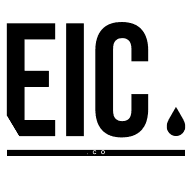In the vast ocean of content, a strong editorial voice can be your lighthouse. It guides your readers, providing them with a sense of direction and consistency. This post will delve into the art of developing a robust editorial voice, exploring its significance, the steps to create it, and how to maintain it over time.
Understanding the Importance of a Strong Editorial Voice
An editorial voice serves as the personality of your content. It's the tone, style, and perspective that makes your work unique. It's not just about what you say, but how you say it. A strong editorial voice can differentiate you from your competitors, making your content more memorable and engaging.
Developing a strong editorial voice is crucial for several reasons. It helps establish a clear identity. Readers will recognize your work even without seeing your byline. It also fosters trust and loyalty. When readers know what to expect from your content, they're more likely to return for more.
Moreover, a strong editorial voice can enhance your brand's image. It reflects your values, mission, and vision. It can attract the right audience and build a community around your brand. It's not just about gaining readers, but retaining them and turning them into advocates for your brand.
Steps to Develop a Strong Editorial Voice
Developing a strong editorial voice doesn't happen overnight. It's a process that requires time, effort, and consistency. Here are some steps to guide you in this journey.
Start by defining your brand's personality. Is it formal or casual? Is it humorous or serious? Is it authoritative or friendly? Your editorial voice should reflect this personality.
Next, consider your target audience. What kind of tone and language would resonate with them? What kind of content do they prefer? Your editorial voice should cater to their preferences.
Then, create a style guide. This document should outline your editorial voice, including your tone, style, and language. It should also include guidelines on grammar, punctuation, and formatting. This guide will ensure consistency across all your content.
Finally, practice and refine your editorial voice. Write regularly and review your work. Seek feedback from your audience and colleagues. Your editorial voice may evolve over time, and that's okay. What's important is that it remains consistent and true to your brand.
Maintaining Your Editorial Voice
Once you've developed your editorial voice, the next challenge is maintaining it. This requires discipline, vigilance, and continuous learning.
First, adhere to your style guide. It's your roadmap to maintaining your editorial voice. It ensures that all your content, regardless of who writes it, aligns with your brand's personality.
Second, regularly review your content. Check if it still reflects your editorial voice. If not, make the necessary adjustments. Remember, your editorial voice is not set in stone. It can evolve, but it should always remain consistent.
Third, encourage feedback. Your readers can provide valuable insights into your editorial voice. They can tell you if it resonates with them or if it needs improvement. Listen to them and incorporate their feedback into your work.
Lastly, keep learning and improving. Attend workshops, read books, and follow industry trends. The more you know, the better you can refine your editorial voice.
Overcoming Challenges in Developing a Strong Editorial Voice
Developing a strong editorial voice is not without challenges. However, with the right mindset and strategies, you can overcome them.
One common challenge is inconsistency. This can happen when multiple writers contribute to your content. To address this, ensure that all your writers understand and adhere to your style guide.
Another challenge is sounding too generic. To avoid this, infuse your personality into your work. Don't be afraid to be unique. Remember, your editorial voice is what sets you apart from your competitors.
A third challenge is maintaining your editorial voice over time. This can be difficult, especially when your brand evolves. To tackle this, regularly review and update your style guide. Ensure that it still reflects your brand's personality and values.
Examples of Strong Editorial Voices
To better understand the concept of a strong editorial voice, let's look at some examples.
Consider The New Yorker. Its editorial voice is sophisticated, intellectual, and witty. It's evident in its choice of words, sentence structure, and tone. This voice aligns with its brand's personality and target audience.
Another example is BuzzFeed. Its editorial voice is casual, humorous, and relatable. It's reflected in its use of slang, emojis, and listicles. This voice appeals to its young, digital-savvy audience.
These examples show that a strong editorial voice is not one-size-fits-all. It varies depending on the brand's personality and audience. What's important is that it's consistent, unique, and resonates with the readers.
The Future of Editorial Voice
As the digital landscape continues to evolve, so does the importance of a strong editorial voice. It's no longer a nice-to-have, but a must-have.
In the future, we can expect more brands to invest in developing their editorial voice. It will become a key differentiator in the content-saturated digital world.
Moreover, with the rise of voice search and AI, the concept of editorial voice will expand beyond text. Brands will need to develop a consistent voice across all platforms, including audio and video.
The future of editorial voice is exciting. It offers endless possibilities for brands to connect with their audience in more meaningful and engaging ways.
Wrapping Up: The Power of a Strong Editorial Voice
A strong editorial voice is more than just a writing style. It's a powerful tool that can elevate your brand, engage your audience, and set you apart in the digital landscape. Developing it requires time, effort, and consistency. But the rewards are worth it. So start cultivating your editorial voice today, and let it be the lighthouse that guides your content in the vast ocean of the digital world.

